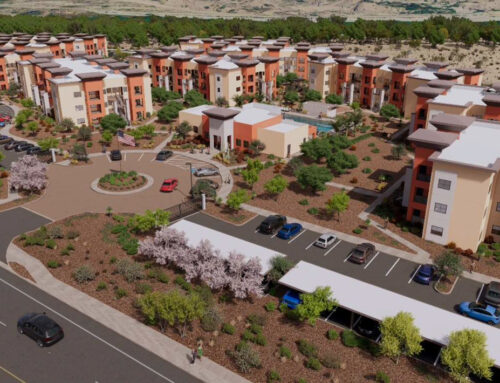While the housing market has been grabbing all of the headlines, there’s another real estate market that’s been taking off in its shadows. Industrial real estate has been experiencing unprecedented demand that’s still continuing to grow. The need for warehouse space and e-commerce fulfillment centers has been so strong that it’s created a boom in an unexpected region of the country.
The need for industrial space was well in motion before 2020. Amazon had already introduced next-day and even same-day delivery for its Prime members. Simultaneously, major retailers such as Walmart and Best Buy were buying as much fulfillment space as possible to meet their demand. Once in-person shopping became either difficult or impossible, retailers entered a level of even greater demand for space, with newer types of retailers entering the fray. Even grocery stores suddenly became online retailers, a trend that has persisted, with Instacart now planning a network of fulfillment centers.
While demand was escalating, the pandemic also exposed the fragility of the global supply chain. Facilities in China and elsewhere had to close down, which created shortages of consumer goods stateside. Retailers responded by securing more storage space to help stave off future shortages, according to James Koman, CEO of ElmTree Funds, a private equity firm focused on commercial real estate. “The reshoring of manufacturing is gaining momentum,” he told CNBC.
Real estate firm CBRE said that almost 100 million square feet of industrial space was absorbed in the first quarter of 2021, and that a record 376 million square feet is under construction. Rents rose 7.1 percent from the same period a year earlier to an all-time high of $8.44 per square foot. Prices in densely populated coastal regions have been soaring by double-digit percentages. In Northern New Jersey, average base rent for industrial properties jumped 33 percent in May from a year earlier, and California’s Inland Empire saw an increase of 24 percent. The scarcity of inventory in these areas has often led to bidding wars.
With space on the east and west coasts becoming less of an option, retailers have embraced a new region to help address this logistical issue. Instead of looking for warehouses near the ports, retailers have tapped into what KC Conway, chief economist of the Certified Commercial Investment Member Institute is calling the Golden Triangle of industrial real estate. While the name evokes pricey real estate along a coast, the Golden Triangle actually stretches through the south and Midwest, between Illinois, Texas, and Georgia. No longer sticking to the ports, retailers are putting their freight on trains and storing it in warehouses and fulfillment centers in inland destinations.
In addition to its relative affordability, the Golden Triangle offers other logistical advantages. The region includes more than half of the U.S. GDP within its boundaries, while 90 percent of area households live within a five-hour truck drive of the rail lines and primary “last-mile” facilities. As a result, developers now build and lease more new warehouse space in Conway’s Golden Triangle than they do in the West Coast and Northeast regions combined.
Betting on a long-term need for fulfillment and logistics facilities, ElmTree Funds has acquired about $2 billion worth of industrial space over the past seven months, outpacing prior years. In order to meet demand, they project that there will be a need for an additional 135-150 million square every year in order to meet growing e-commerce demands.
“Last-mile logistics has become integral in every aspect of our economy and a critical component in the functionality of commercial real estate,” says K.C. Conway.





